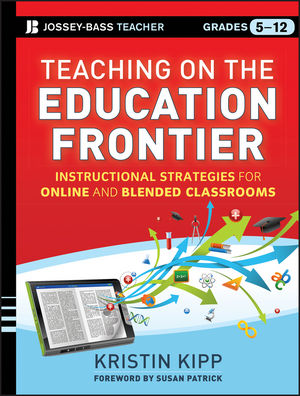I spent some time today looking through the archives of this blog. I wanted to understand how my thinking had changed since I first began writing about teaching and learning in 2009. I came across my philosophy of education from way back when I got my first online teaching job, and I was shocked to find how much of what I believed about learning then is still the same today. While our methods of education have evolved fairly drastically in the last ten years, what defines strong instruction remains the same–connecting students with content and challenging their thinking. We may do that more through technology now but the end goal is remarkably consistent. I’ll share an excerpt of that philosophy here as it’s worth reconsidering. Here’s what I still believe about teaching–
First published in May of 2009
Why do I teach?
Any philosophy of education has to begin with this fundamental question. Everything else I do as a teacher depends on it. Ultimately, I teach because I love being with students and seeing the light bulb come on when they finally “get it.” I believe that every student deserves powerful learning experiences. Whether working with teachers or directly with students, I get to impact the future one student, one lesson, one classroom at a time, and that’s exciting work.
How do I think learning occurs?
I’ve come to realize that one element more than any other defines who I am as a teacher: I believe in the power of active learning. I believe that students need to interact with material in order to truly learn it. I think the idea of a passive learner is a myth. Students can’t just listen to material and learn it. They can’t be expected to really “know” something unless they challenge it, transform it, discuss it, and think about it in new ways. That belief above all other shapes the work that I do. When students are challenged to grapple with new ideas, that’s when the true learning occurs.
What goals do I have for my students?
I used to begin every year by telling students that I only had one goal for them in that entire year. I told them, “When you leave my classroom, I want you to sound like an intelligent human being.” They all chuckled when they realized that my “one” goal was so enormous that we could spend a lifetime working on it. However, when it comes right down to it that is my goal for my students; I want them to learn to be critical thinkers, critical consumers of information. When they read something on Wikipedia, I don’t want them to just absorb it as the truth. I want them to seek out other sources and really think through the issue, I want them to be able to articulate an opinion, and I want them to be able to support their opinion in a reasoned, logical manner. Ultimately, I want them to sound like an intelligent human being!
How do I help students achieve these goals?
Helping students to achieve high standards is about meeting each student where they are at. In my classroom, I strive to make sure I understand every student’s needs. I want to ensure that I’m pushing them all to their own personal excellence. That process starts with relationships. I need to know the students and the kind of life they live. Then, it’s about data. I need to know what the relevant data (testing and otherwise) says about their skills. Then, it’s about formative assessment, using the activities we do in class to gain a greater understanding of their capabilities. From there, I can really begin to push each student to achieve their own personal best by differentiating assignments, supplying in-depth feedback, and providing well-timed, appropriate interventions. Students in my classroom know that I will not accept mediocrity. They must go beyond the simple, obvious answer and seek excellence in their work. My job is to support them every step of the way in that pursuit.
